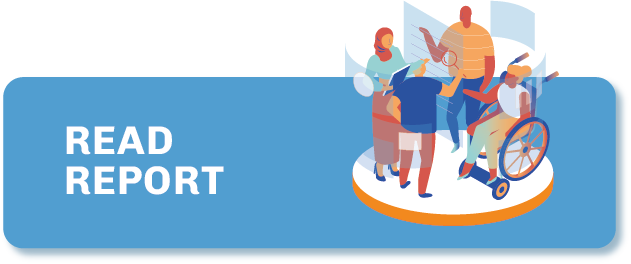Serbia
Most of the Serbian digital native media organisations included in the directory report on topics related to politics, society, human rights and addressing the problems vulnerable groups face. Their funding is mainly dependent on project grants. Some of them run crowdfunding campaigns and receive occasional individual donations from their readers.
GENERAL INFORMATION
Press
freedom
ranking
Internet
penetration
POPULATION
Media organisations
in the Directory
TYPE OF COVERAGE

TYPE OF ORGANISATION

GENDER OF FOUNDERS

Press freedom
Serbia’s constitution guarantees freedom of expression, and the country has some of the “most advanced” media laws, says Reporters Without Borders in its Press Freedom Index. However, it notes that journalists often work within a restrictive context, one which includes “self-imposed censorship”.
According to the organisation, regulations that stipulate how officials should react when journalists are attacked “have led to positive results” for some. “However, the judiciary, which deals with many media-related issues including strategic lawsuits against public participation (SLAPPs), has yet to prove its independence and effectiveness in protecting freedom of the press,” it adds.
Market structure and dominance
With over 2,500 media outlets registered in the country, Serbia’s media market is highly fragmented, notes Reporters Without Borders. The state and ruling party exercise influence over private media organisations in part through advertising contracts and other indirect subsidies. Many private outlets are owned by the supporters of the ruling political party.
“Some privately owned national broadcasters and popular tabloids regularly participate in smear campaigns against the political opposition and other perceived government opponents,” notes the organisation Freedom House in its Freedom in the World 2022 report on Serbia. Award-winning investigative pieces have a limited audience, as these pieces are only featured online and in a few independent media outlets, according to Reporters Without Borders.
How media is funded
Serbian independent digital native media outlets are financed mainly through grants from foreign governments and private donor organisations. Some outlets offer advertising and consulting services to non-profit organisations as an additional source of revenue. Individual donations are small, but although they cannot significantly contribute to the sustainability of these outlets, they are important as a symbol of support for independent media.
Seven profiles of digital native media organisations from Serbia are included in the directory. This includes six profiles based on interviews and one profile based on desk research. Most of these organisations are non-profit media outlets whose work is financed primarily through grants from foreign donor organisations. Some of them use advertising and consulting services as additional sources of revenue.
The selected media outlets cover important political and social topics and take a critical stance towards the government. “Mašina was created with the aim of encouraging critical journalism,” says András Juhász, one of the editors of the Mašina portal. Most media outlets included in the directory produce high-quality stories on politics and human rights, including topics related to gender, feminism, the LGBTIQA+ community and other minority groups. Their investigations have won numerous national and international journalism awards.
In addition to Serbian being the primary language of all seven portals, part of these publications’ content is also published in English. “We are trying to reach as many readers as we can,” says Mirana Dmitrović, editor-in-chief of media outlet Magločistač. Magločistač publishes some of its articles in Croatian and Hungarian, while the platform SEEcult.org translates some of its content into German.
Although they do a very important job of reporting on threatened human rights and civil liberties in Serbia, the operations of independent digital native media outlets in the country are project-based, and their work is largely dependent on foreign donors. More funds could be directed to help these organisations create sustainable business models and gain long-term financial independence from donor organisations.
Last updated: December 2022
Additional contributions were made by Milivoje Pantovic, who at the beginning of this study supported the SembraMedia team in identifying eligible independent digital native media outlets in Serbia.
CREDIT FOR STATISTICS: Press Freedom statistics, RSF Press Freedom Index 2022; Internet penetration and population statistics, from Internet World Stats

